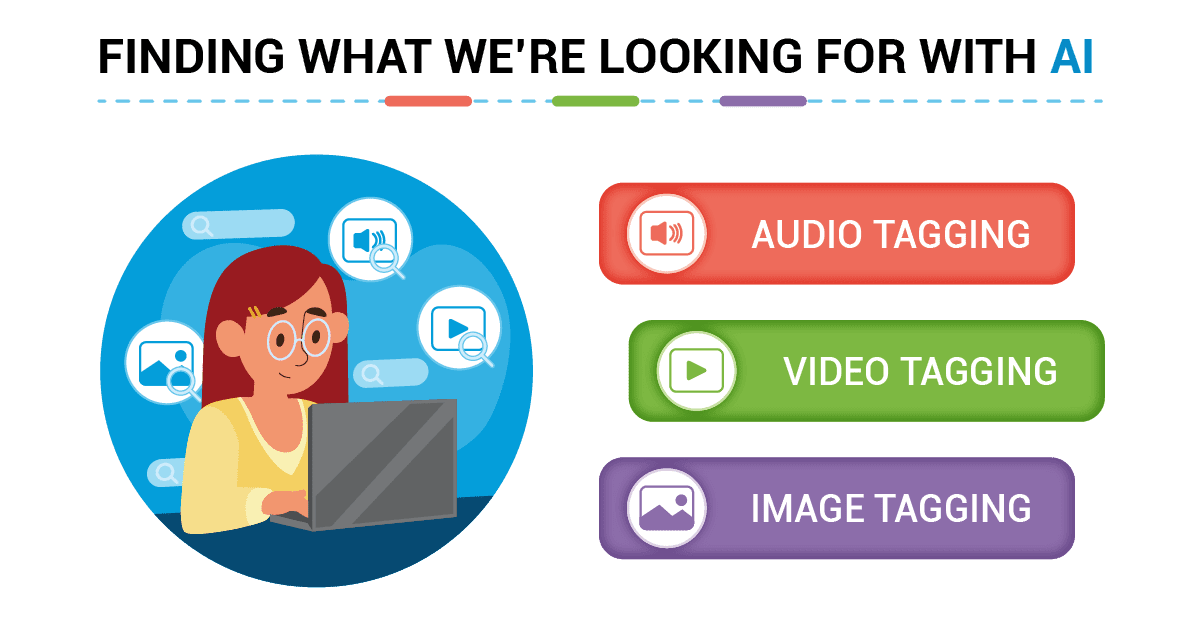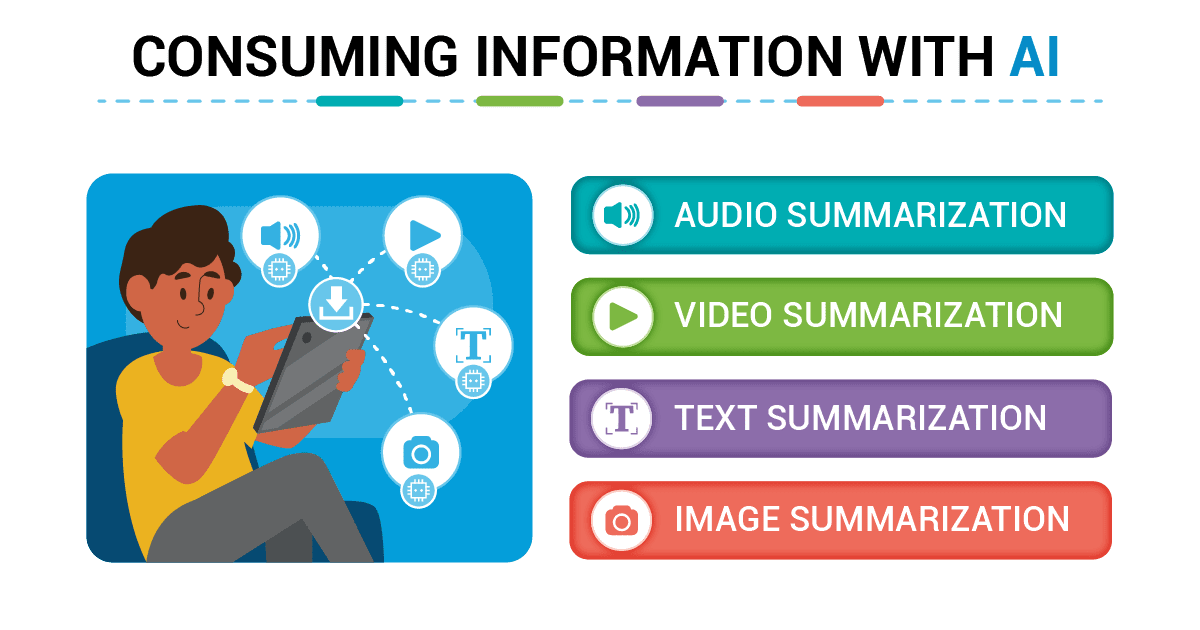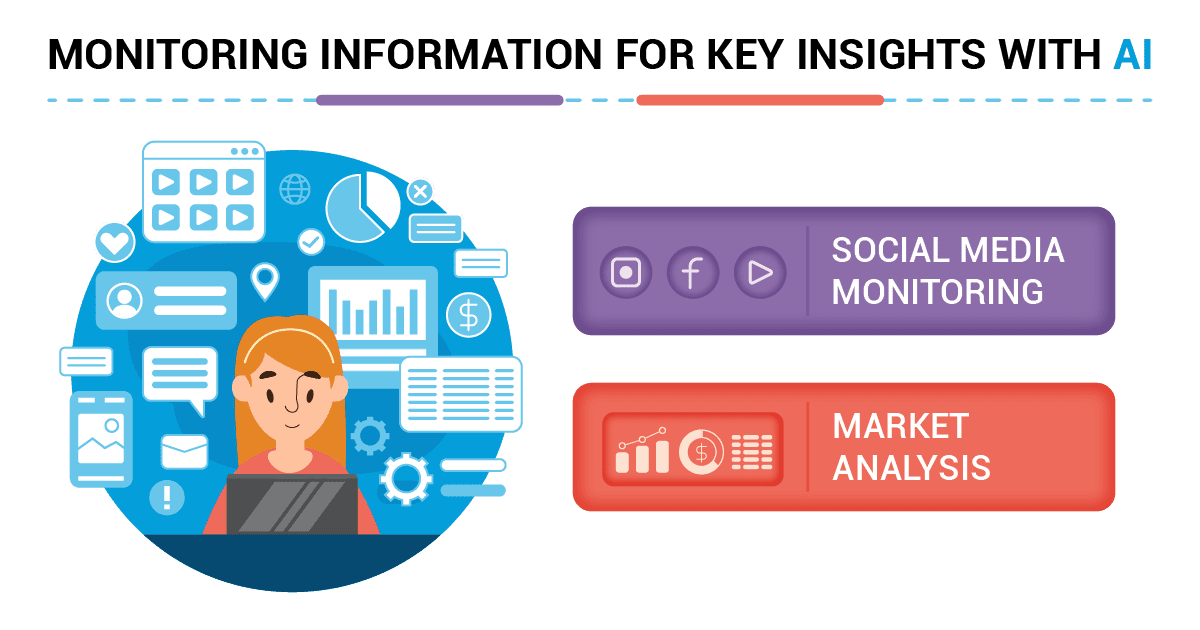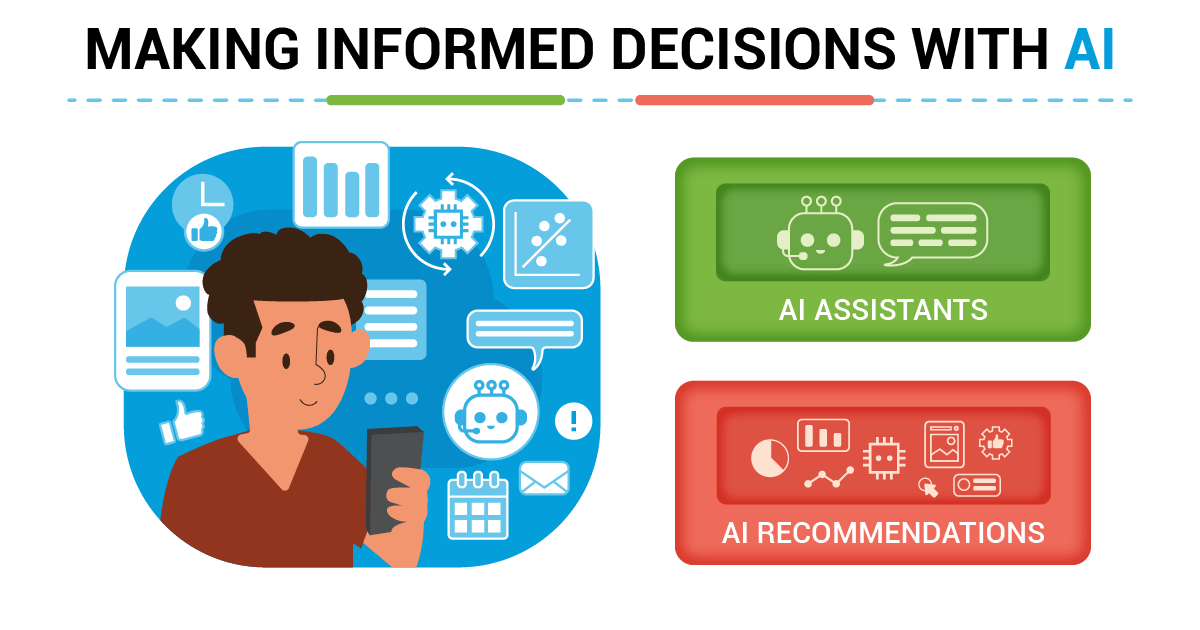Navigating and interpreting data can be overwhelming due to the massive volumes of information we deal with daily. Let’s explore how AI is helping to streamline this process in our professional lives.
Finding What We’re Looking For with AI
We’ve all spent time searching for a specific sound in an audio file, a scene in a video, or an image in a gallery. AI is making this task faster and more accurate.
- Audio Tagging: Audio tagging is an area where AI has demonstrated great efficiency. AI algorithms can analyze audio files and assign relevant tags based on the content. For instance, an AI could analyze a podcast and tag sections where specific topics are discussed, such as “climate change,” “technology,” or “sports.” This technology can be highly beneficial for professionals working in fields such as journalism, media production, or research, as it allows them to navigate audio content quickly. Imagine you’re a journalist with hours of interview recordings. AI can tag different sections of the audio based on content, helping you find the parts you need without listening to the entire recording.
- Video Tagging: AI has revolutionized how we manage and interact with video content. By analyzing both audio and visual elements of a video, AI can identify key scenes, characters, objects, or activities, and tag them accordingly. A news producer might use this to quickly find sections of recorded footage relevant to a particular story. Similarly, a video editor can find specific scenes without manually scanning the entire video.
- Image Tagging: AI’s ability to analyze and tag images has vast implications, particularly in the world of digital marketing and e-commerce. By recognizing elements within an image, AI can tag these elements with labels such as “dog,” “mountain,” or “car.” This can aid in organizing large databases of images or help online shoppers find specific products. For instance, a professional photographer could use AI image tagging to categorize their portfolio, allowing clients to find specific types of images quickly. A real estate agent could quickly find all photos of kitchens in their image database when creating a property listing.
AI Helps Us Consume Information
In our information-saturated world, AI’s ability to summarize audio, video, text, and images is a game-changing tool that enhances efficiency and comprehension. By condensing vast amounts of data into digestible formats, AI summarization technologies empower professionals to extract key insights and make informed decisions quickly, revolutionizing the way we navigate and interpret information.
- Audio Summarization: AI can analyze and transcribe audio files into text using automatic speech recognition technology. Then, using natural language processing (NLP), AI can identify the key points in the text and generate a concise summary. This is extremely useful for professionals who need to review long recordings, like meetings or interviews, but don’t have the time to listen to the entire audio. AI can listen to long audio files, such as conference calls or webinars, and provide a concise summary. This feature can be a lifesaver for a manager who missed a meeting and needs a quick update.
- Video Summarization: Video summarization involves generating a shorter version of a video by extracting its most important scenes. AI does this by analyzing and understanding the content of the video, both visually and audibly. Just like with audio, AI can watch a video and generate a brief summary of the main points. This technology could be extremely useful for a marketing professional needing to review several competitor videos in a short amount of time.
- Text Summarization: AI algorithms, particularly those based on NLP, are capable of summarizing large bodies of text. The AI can understand the context and extract the most significant points, condensing lengthy articles, reports, or books into a shorter format. AI can skim through large volumes of text and provide a condensed version, highlighting the main points. For example, a lawyer could use AI to summarize long legal documents or court transcripts.
- Image Summarization: While summarizing images may seem less straightforward than text or audio, AI can indeed provide a type of ‘summary’ for collections of images. AI can analyze a group of images and select a subset that best represents the entire collection. It can also generate descriptions for individual images, effectively summarizing the content of the image. In doing this AI can identify common patterns or themes. This tool could help a designer quickly understand the popular trends in a collection of design images.
Monitoring Information for Key Insights 
As the volume of data we generate continues to explode, AI’s capability to monitor and analyze information in real-time has become an invaluable asset for businesses and individuals alike. From social media monitoring to market analysis, AI can unearth trends, track sentiment, and alert us to changes, providing a competitive edge and allowing us to respond swiftly and effectively to shifts in the landscape.
- Social Media Monitoring: AI social media monitoring involves using machine learning and natural language processing algorithms to scan and analyze social media platforms. These algorithms can automatically monitor vast amounts of data across various platforms like Twitter, Facebook, Instagram, and LinkedIn to identify trends, sentiment, and relevant topics. They can track keywords, hashtags, mentions, and even emoticons, effectively keeping tabs on what’s being said about a particular brand, product, or event. By doing this, AI can provide insights about consumer behavior, popular trends, and potential crises, making it a crucial tool for public relations, marketing, and customer service. This is a powerful tool for PR and marketing professionals who need to keep a finger on the pulse of public opinion.
- Market Analysis: AI conducts market analysis by using advanced algorithms and machine learning techniques to process large volumes of data, including past sales data, customer demographics, and industry trends. These algorithms can identify patterns and trends that are often too complex or subtle for humans to detect. In this way, AI provides real-time insights that inform strategic decisions. For example, a retail store owner could use AI to monitor shifts in consumer behavior and adjust their business strategy accordingly.
AI Supports Decision-Making
Artificial Intelligence plays a crucial role in making informed decisions by providing us with AI assistants and AI-powered recommendations. These smart tools harness the power of machine learning and big data to deliver insights that would be otherwise difficult or time-consuming to obtain.
- AI Assistants: AI assistants, like virtual personal assistants and chatbots, utilize natural language processing (NLP) to understand human language, context, and intent. They can answer queries, provide recommendations, schedule tasks, and even make decisions on our behalf based on our preferences and past behaviors. AI assistants like Google Assistant, Siri, and Alexa are becoming smarter every day.
- AI Recommendations: Typically seen in online platforms such as streaming services, e-commerce sites, and social media networks, these AI systems analyze vast amounts of data to identify patterns and trends, then use these insights to make personalized recommendations. Based on data analysis, AI can make recommendations for better decision-making. For example, an AI tool could recommend the best time to post on social media to maximize engagement, aiding a social media manager in their strategy.



